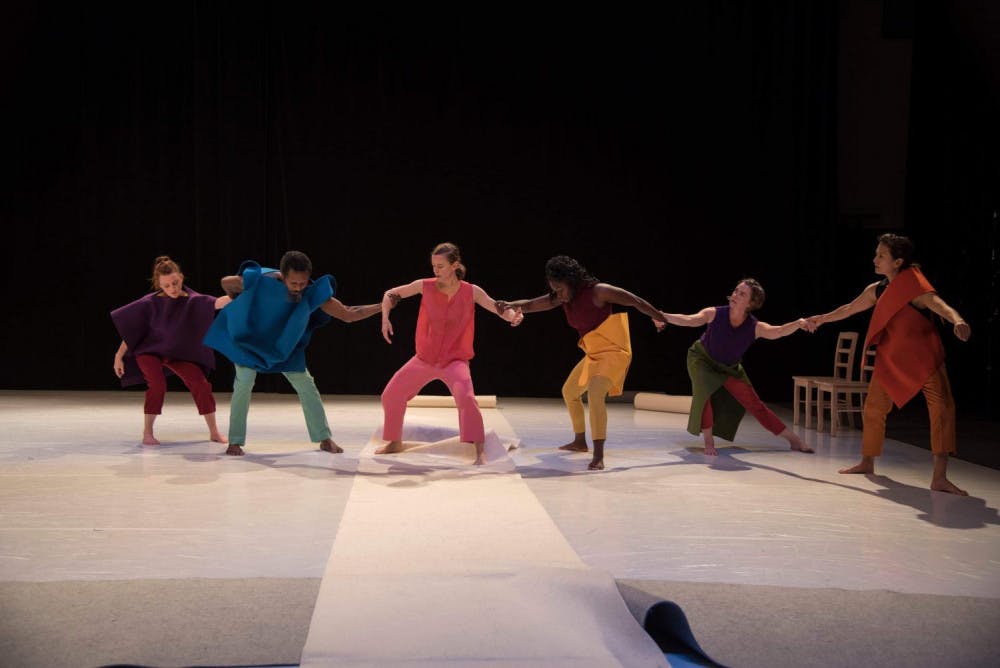When Middlebury students think of syntax, we often think of literary analysis, points off our last essays or units in Intro to Linguistics. We don’t often think of dance. But syntax was a main focus of Bebe Miller’s “In a Rhythm,” performed by six dancers and Miller herself over the weekend from Nov. 8 to 10. The performance featured oration, silence, YouTube interviews, a Nelly hit and a single piano note to which the dancers would move, jump and groove.
Miller began the piece with a story of listening to an audio reading of a text by David Foster Wallace and her enthrallment in the writing and the reader’s voice. Miller herself spoke warmly and captivatingly, a complement to the dancers who moved behind her, responding and interpreting her words. The choreographer and director of the company described how she was inspired by the syntax of the texts, and wanted to further explore how syntax and flow could relate to dance.
“In making this suite of dance I wanted to look at the syntax of movement — how we collide with meaning through the juxtaposed dynamics of action and context, in time and space,” Miller wrote in the program as an introduction to the piece. “Our tacit reading of the building blocks of situations is inherent in the culture it serves.”
Exploring the syntax of movement, Miller played around with the timing of the music and dance moves, breaking between or effortlessly moving through phrases. This was paralleled in the use of the roll of grey hard felt placed on stage, which was either smoothly rolled out by the dancers or scrunched up spontaneously. The dynamic use of time in the choreography was much like what one might read in piece of literature — its flow changing with its meaning.
Miller also manipulated space between her dancers as a way of exploring syntax in movement. The large gaps between the dancers, which often drew different groups to different ends of the stage, made it difficult to see everything that was going on at once. This, Miller explained in the Q&A after the performance, was her intention: much like in communication and in language, people will often miss things that are happening. It is to the audience’s discretion to take in what they can and to understand the piece as a whole.
With this, “In A Rhythm” became as much political statement as artistic exploration. From talking about her inspiration for the piece, Miller shifted to speaking about race, mentioning Emmett Till and her ability to conjure up his face in her head, and an interview between Toni Morrison and journalist Charlie Rose, in which Rose asks Morrison: “Can you imagine writing a novel not centered around race?” The interview was later played from a laptop, surrounded and watched by a few of the company members, while Trebien Pollard and Professor of Dance Christal Brown, two black dancers, danced behind them. Pollard and Brown slouched and jammed together in their chairs while Nelly’s “Country Grammar” cut in from the interview. By having these moments, Miller seemed to be inserting race into her dance, a deviation from normal dance choreography and a response to Charlie Rose’s interview question.
There were so many different levels to this piece, which was selected and brought to Middlebury as part of the Clifford Symposium, from race, to syntax and language, to the concept of art.
“Everything is here. Everything is available,” Miller said. “What’s left is choice.”
Syntax of Dance, Race & Communication

PELE VONCUJOVI
The performance was featured in conjunction with the 2018 Clifford Symposium.
The performance was featured in conjunction with the 2018 Clifford Symposium.
Comments



